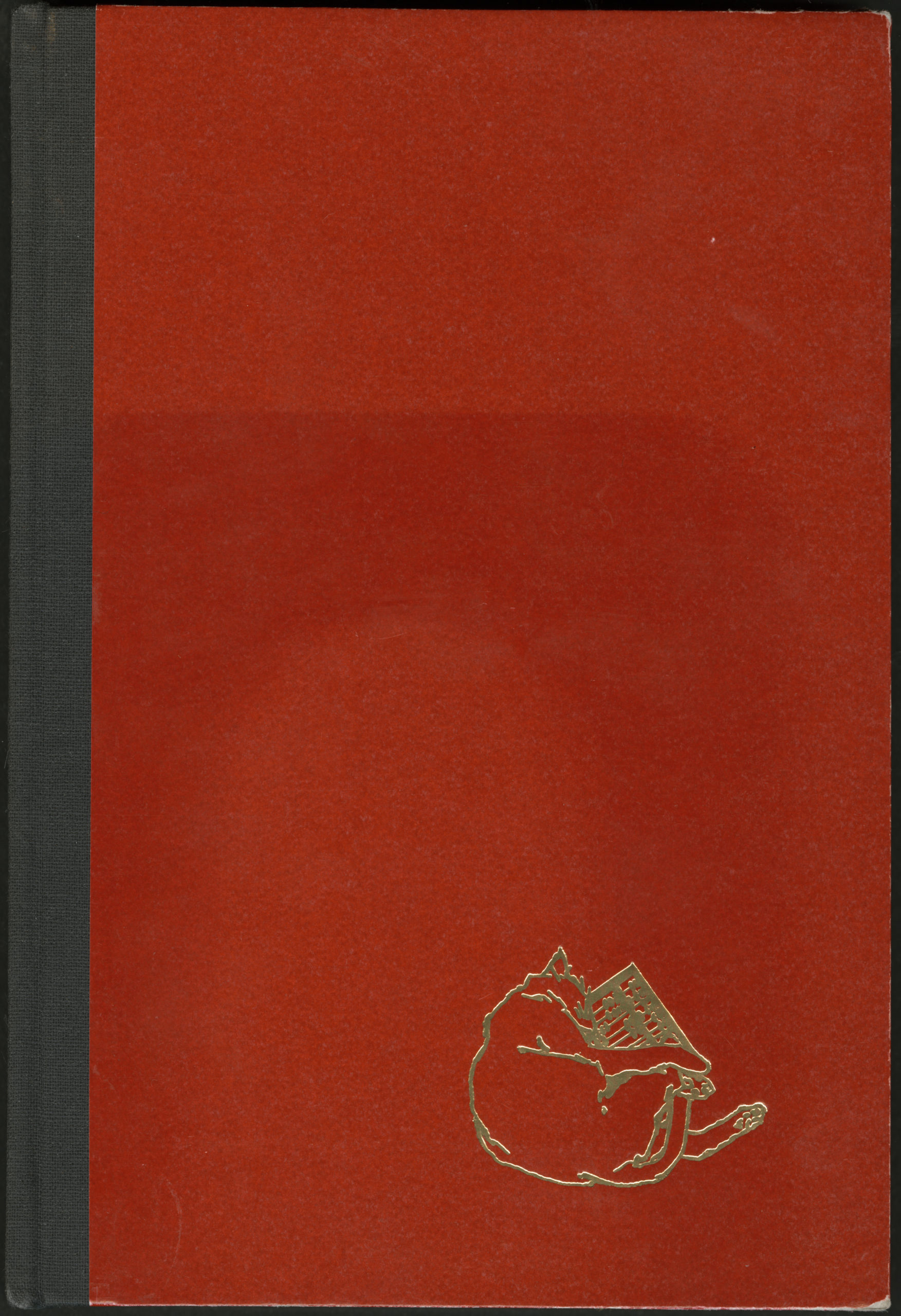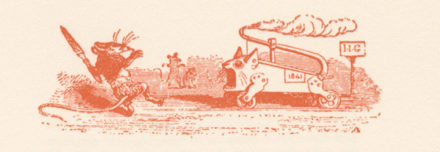William Targ. Abacus Now: Footnotes to Indecent Pleasures and Observations on Fine Book Printing, Book-Collecting and Matters Personal including How to Survive in the Computer Age
Targ Editions No. 24
Abacus Now was Targ’s baby. The book’s announcement states, “In every sense this is the most beautiful and unique of all Targ Editions.”
A follow-up to his lengthy memoir, this number in Targ Editions gave him the space to reflect on his life-long love of fine printing and great books. Targ also used the smaller, more intimate design of this book to muse openly and candidly about everything from religion and politics to computers and letterpresses. Much as he drops famous names throughout Indecent Pleasures, in Abacus Now Targ refers to and quotes the pioneers of fine printing.
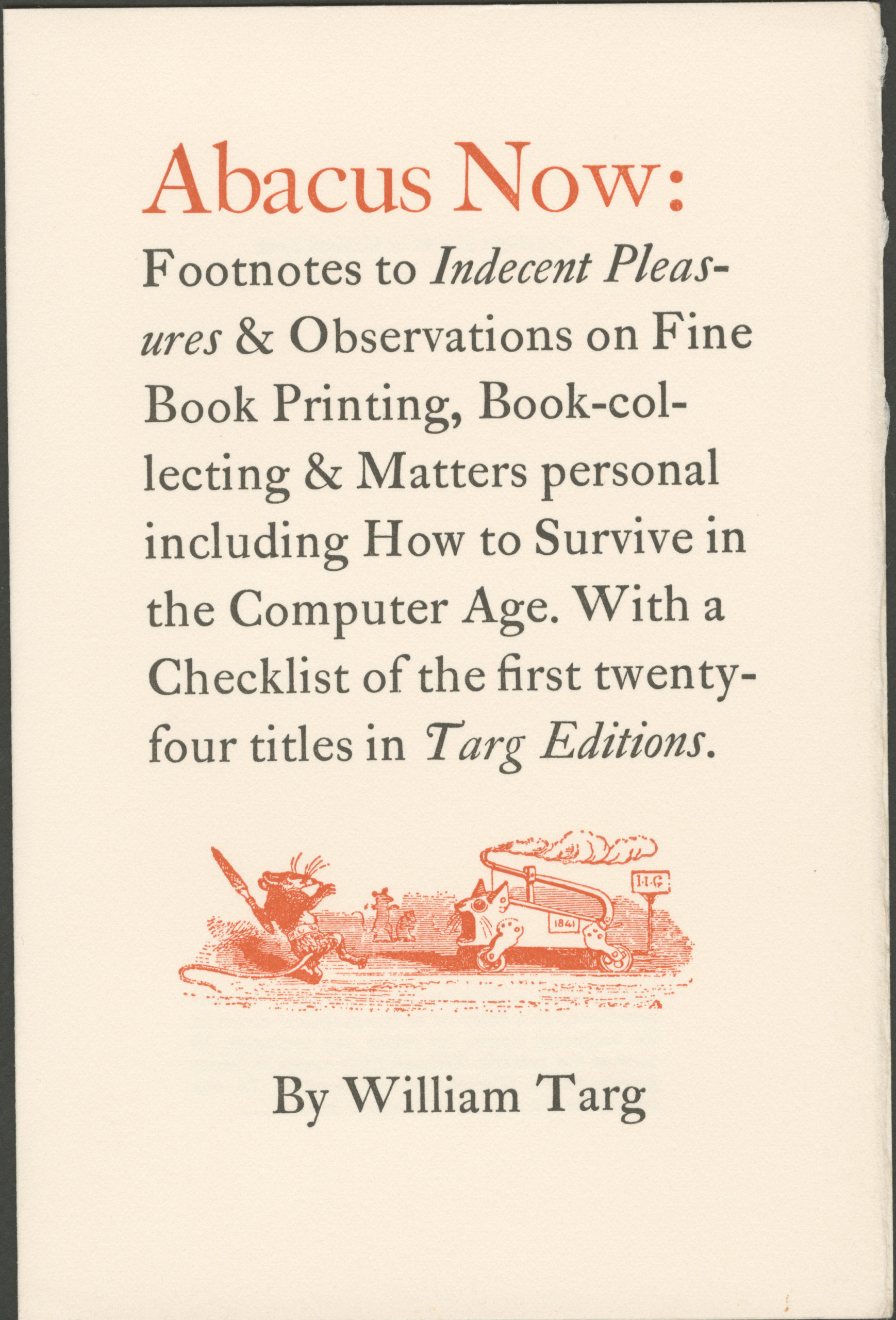
“The purpose of this little volume,” he writes, “is to present a few background details relating to Targ Editions, as well as some of my views on other matters of possible interest to a limited circle of friends. … I publish hand-produced books with profit as one motive, but it is the printing and book-making craft that motivates me essentially, and I honor the place where hand-produced books are still made in our society.”
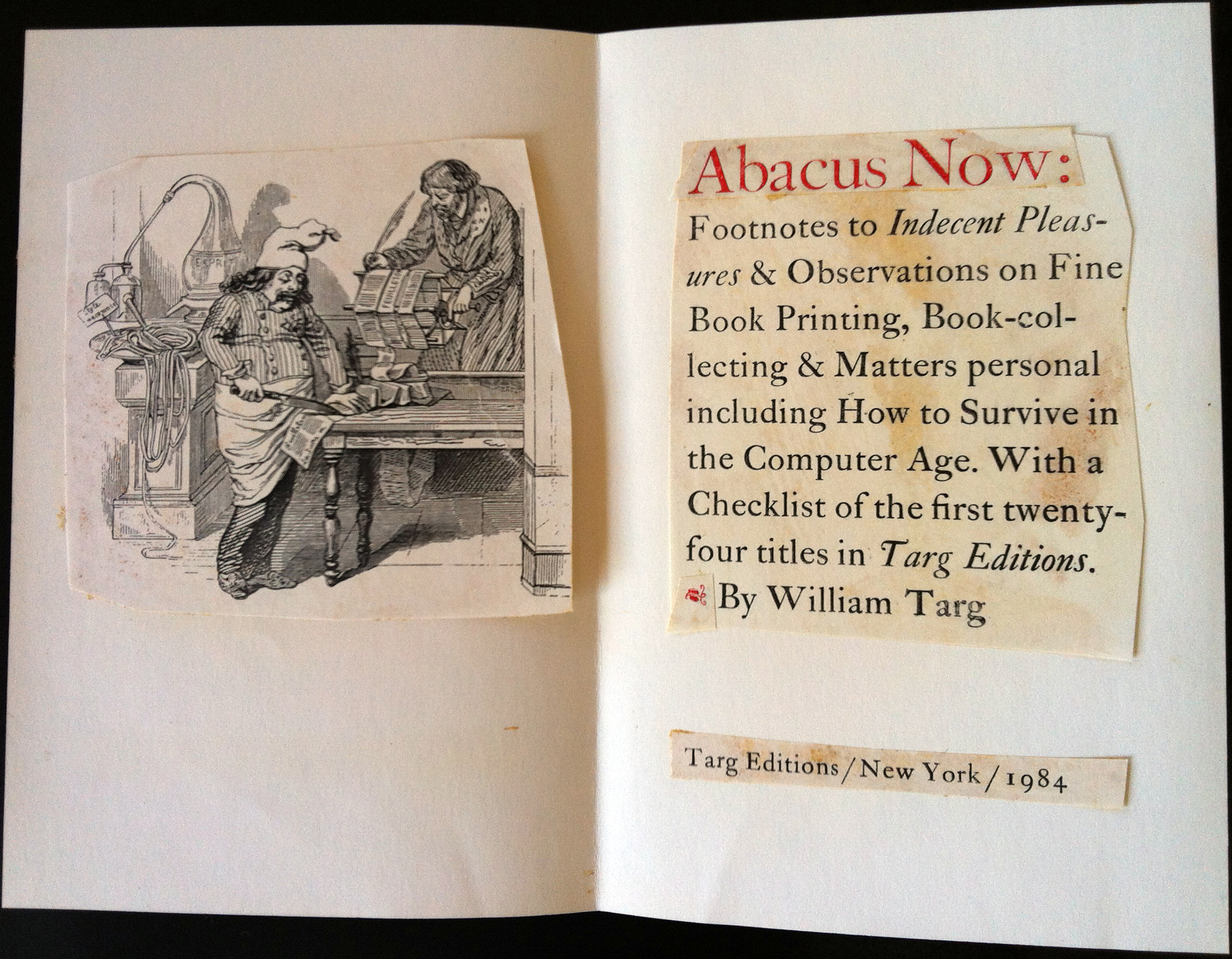
In “The Zen of Book Reading,” Targ urges the modern reader to slow down and take in a book, not just cognitively, but physically as well. “Chew slowly with your eyes and meditate. Breathe deeply, aerate the brain and allow the words you have just read to re-run through the cells of your mind like a film.” Multitasking has no place in Targ’s philosophy of books.
Targ also uses Abacus Now to share his handling of retirement from commercial book publishing and return to books on his terms. “Today I prefer good rare book catalogs to the stock market reports.”

Targ recruited three printers to collaborate with him on Abacus Now: Ron Gordon, Leslie Miller, and Leonard Seastone. Each printer designed different sections, which were then bound in one book. While respecting the ideas and opinions of his printers, as he did in all of the Targ Editions, Targ weighed in with many ideas about color, paper, and type.
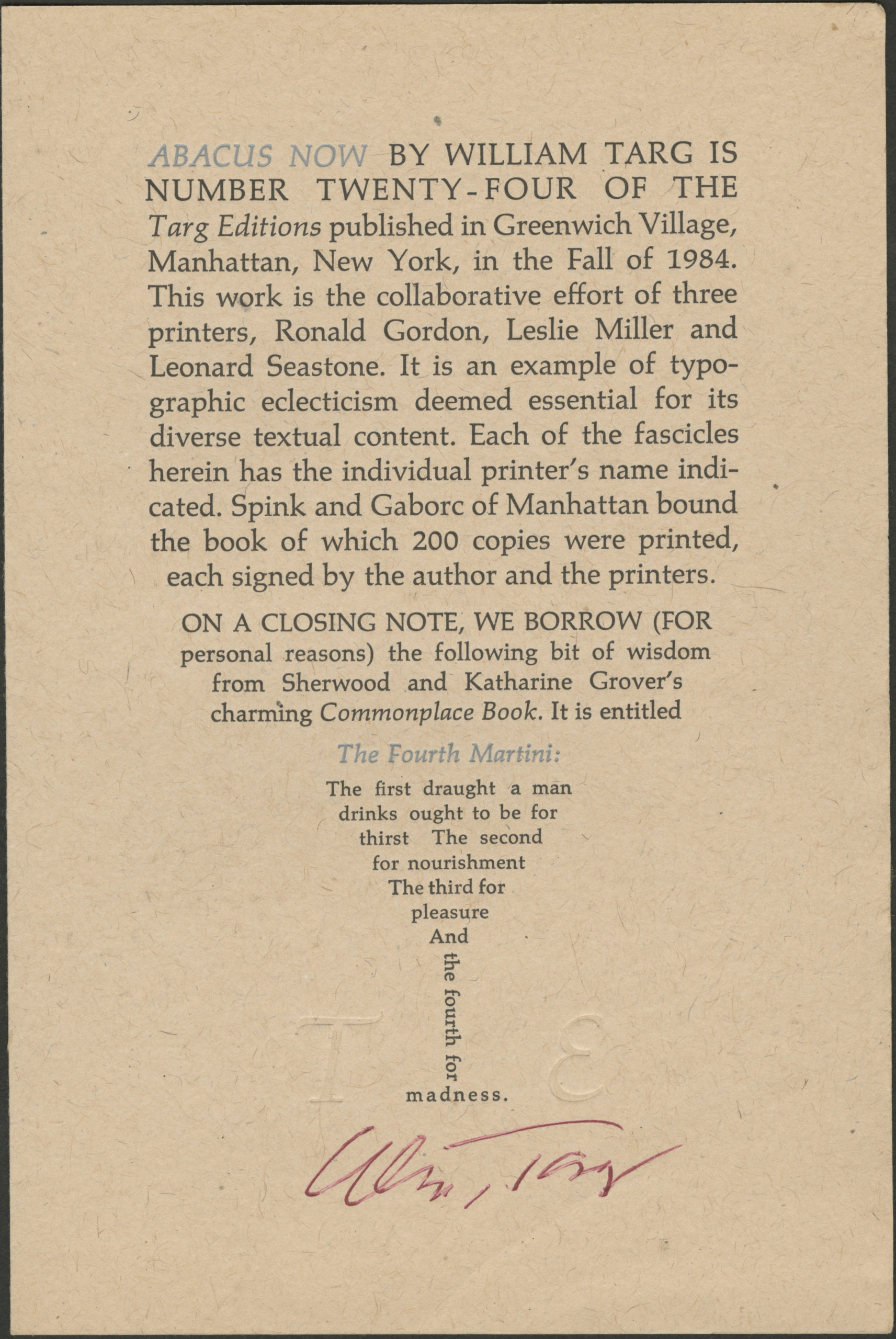
The book’s title and gilt cover stamp of a playful cat are explained in a fanciful story. Responding to a friend’s purchase of a home office computer, Targ goes from his Greenwich Village home to Chinatown to buy an abacus for that friend. When said friend receives the gift his cat lies down next to it purring, leading Targ to ponder “the cat’s memory-capabilities, and it seemed to me perfectly natural that it would be calling up memories of the ancient, original abacus from some bazaar stall or home in ancient China, Egypt or Greece.” The friend then shows Targ the new computer, “a shining, gray-white enamel model, with a dead gray-green screen.” They put the cat on the computer. The cat snarls and runs from the room. They find the cat back snuggling with the abacus.
Targ closes, “Do you believe this story? Are cats smarter than people? A thought for the day in the life of computer addicts: Yes, cats are smarter than people, and the central fact is that people don’t need computers in their homes. Any cat can tell you that!”
